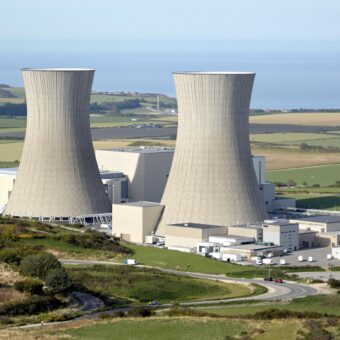In the field of industrial automation, precision and reliability are essential criteria for ensuring the proper functioning of systems. Timer relays play a crucial role in this pursuit of performance, enabling the control and synchronization of various processes with high precision. These devices are indispensable for optimizing operations, improving energy efficiency, and ensuring the safety of installations. This article explores timer relays, their characteristics, applications, and the benefits they bring to modern industries.
Everything You Need to Know About Timer Relays
A timer relay is an electromechanical or electronic device designed to control the flow of electrical current in a circuit based on predefined time parameters. It allows for the delay or extension of the activation or deactivation of an electrical circuit, thus providing precise and automated management of time-based processes.
During the timing period, the relay maintains its initial state (contacts open or closed) until the predefined time has elapsed. At the end of this period, the relay changes state: it can close a contact to activate a circuit or open a contact to deactivate it. This change of state allows for the automatic and precise control of various devices or processes.
Main Components of a Timer Relay
A relay, whether electromechanical or electronic, is composed of several key elements that enable it to function correctly. The coil, or solenoid, is the element that receives the control signal, typically an electric current, and generates a magnetic field. This magnetic field activates the armature, or movable core, which reacts by moving to close or open the relay’s contacts. The contacts can be normally open (NO), normally closed (NC), or changeover (CO), allowing control of the current flow in the circuit connected to the relay. A return spring brings the armature back to its initial position when the current in the coil is cut off, ensuring that the contacts return to their normal state. The control circuit provides the control signal to the coil and may include protective components, such as freewheeling diodes.
The housing protects the internal components from external elements and ensures electrical insulation, while the connection terminals facilitate installation. For timer relays, a timing circuit manages the time count and triggers the relay’s state change after a predefined period. Finally, digital relays may include a programming interface to configure and program timing parameters or other advanced functions. These components work together to enable the relay to control electrical circuits precisely and reliably in response to specific control signals.
How Does a Timer Relay Work
A timer relay functions by controlling the flow of electrical current based on time. Here is a detailed explanation of how it works:
Control Signal: The timer relay receives a control signal, typically an electrical current, which triggers the start of the timing process. This signal can come from a switch, sensor, or another control device.
Start of Timing: Once the signal is received, the relay begins to count time according to the set parameters. These parameters can be adjusted for durations ranging from a few milliseconds to several hours, depending on the model and application.
Timing Period: During this period, the relay maintains its initial state (open or closed) until the predefined time has elapsed.
Delayed Action: At the end of the timing period, the relay changes state: it can close a contact to activate a circuit or open a contact to deactivate it. This change of state allows for the control of specific devices or processes.
Different Types of Operation
- ON Delay Timer Relay: This type of relay activates the circuit after a certain delay once the control signal is received. For example, if the delay is set to 5 seconds, the circuit will activate 5 seconds after receiving the signal.
- OFF Delay Timer Relay: This relay keeps the circuit active for a certain time after the control signal has been interrupted. For example, if the delay is set to 10 seconds, the circuit will remain active for 10 seconds after the signal is cut off.
- Multifunction Timer Relays: These relays can combine several types of timing and offer greater flexibility for complex applications. They can be programmed for specific timing sequences.
- Cyclic Timer Relays: They alternate between periods of activation and deactivation according to predefined time intervals. For example, they can activate a circuit for 1 minute, then deactivate it for 2 minutes, and so on.
Industrial Applications of Timer Relays
Timer relays find a multitude of applications across various industrial sectors due to their ability to precisely control time-based processes. Here are some of the main industrial applications of timer relays:
- Food Cleaning. For cleaning or disinfection applications, a timer relay can be used. Timer relays can be used in digital or analog versions to control process time, to program each step of the process, or to activate the cleaning of the design unit after a defined time (e.g., regular filter cleaning).
- Food Ovens. In the food industry, timer relays are used to ensure there is no variation in cooking time or temperature to avoid affecting the final product and incurring losses. Timer relays are used in large ovens, for example, for the production of bread, pastries, and other products.
- Lighting Systems. Timer relays play a crucial role in controlling lighting systems for buildings and outdoor spaces. They provide reliable timing functions for streetlights, stairwell lighting, and automatic switching applications. For example, they can be used to implement delays for emergency lighting, lighting control, and energy-saving applications.
- Air Extraction. Once the system is turned off, the suction must continue to operate for a certain time to ensure that no sawdust remains on the machine. The timer relay is used with the ON delay function. The suction system operates for the specified duration and removes the sawdust. If the system is turned on during this time, the elapsed time is reset, and the timing starts over the next time the system is turned off.
- Process Automation. In industrial processes, timer relays are essential for automating operation sequences, ensuring that each step of the process occurs in a predefined order and time interval. Examples include sequencing operations to control motor start-ups and coordinate processes within manufacturing facilities.
- Conveyor Belts. Timer relays are used in conveyor systems to control motor operation, ensure a steady flow of materials, and prevent system blockages or overloads.
Advantages of Timer Relays
Timer relays offer numerous advantages that make them essential components in various industrial and domestic sectors. Here are the main benefits of using them:
- Precise Time Control: Timer relays allow processes to be controlled with high temporal precision, ranging from a few milliseconds to several hours. This ensures that operations proceed exactly as planned, without unwanted variations.
- Operational Efficiency: By automating time sequences, timer relays help optimize production and manufacturing processes, reducing downtime and increasing productivity.
- Enhanced Safety: Timer relays can introduce safety delays, for example, by delaying the activation of dangerous machinery or controlling access to sensitive areas.
- Custom Programming: Timer relays offer great flexibility by allowing specific delays to be programmed, tailored to each application. This makes them adaptable to a wide range of industrial needs.
- Efficient Energy Management: By precisely controlling equipment activation and deactivation cycles, timer relays help reduce energy consumption and optimize resource use.
- Ease of Integration: Timer relays are generally easy to install and integrate into existing systems, thanks to their standard connection terminals and compatibility with various control signals.
- Diagnostics and Monitoring: Some modern timer relays include diagnostic and monitoring features, enabling quick detection of anomalies and proactive maintenance planning.
- High Reliability: Designed to operate in demanding industrial environments, these relays are robust and offer a long lifespan, reducing maintenance needs and the risk of failures.
- Cost Reduction: Automating repetitive tasks and reducing manual interventions help lower operational and maintenance costs.
- Equipment Protection: By managing equipment operating cycles, they prevent overheating, excessive wear, and breakdowns, thereby extending the lifespan of machines and systems.
- Multifunctionality: Some models combine several types of timing (ON Delay, OFF Delay, cyclic), providing a versatile solution for complex applications.
- Reduction of Demand Peaks: They help smooth energy consumption by avoiding demand peaks, which can reduce energy costs and improve electrical grid stability.
- Intuitive User Interface: Digital models offer user-friendly programming interfaces, allowing for quick and precise configuration of timing parameters.
- Fewer Manual Interventions: By automating time-based processes, timer relays reduce the need for manual interventions, decreasing the risk of human errors and maintenance costs.
How to Choose a Timer Relay?
Choosing a timer relay suited to your needs requires considering several criteria to ensure optimal performance and successful integration into your system. First, it is essential to determine the type of timing required. ON Delay relays are ideal for applications that need a delay before activating a process, while OFF Delay relays are suitable for systems where the circuit must remain active for a certain time after the control signal is cut off. Multifunction relays offer increased flexibility by combining several types of timing, suitable for complex systems, and cyclic relays are perfect for applications requiring repetitive cycles of activation and deactivation.
Considering the Timing Range
The timing range is another crucial factor. Ensure the relay can handle the delay durations required by your application, whether short (milliseconds) or long (hours), and check the timing precision, especially if your application requires very precise time control. Current capacity and working voltage are also important considerations. The relay must be able to withstand the current that will pass through its contacts without risk of overheating or failure, and it must be compatible with your system’s voltage, whether direct current (DC) or alternating current (AC).
Programming the Relay
The interface and programming options are particularly important for digital relays. A user-friendly interface facilitates the programming and configuration of timing parameters, and advanced programming options allow for setting complex sequences or custom operating modes. The compatibility and integration of the relay into your existing system are also key considerations. Ensure the relay is compatible with the type of control signal used in your system and check its dimensions and mounting options to guarantee smooth physical integration.
Choosing the Right Contact Types
The type of contacts is another aspect not to be overlooked. Normally open (NO) contacts close when the relay is activated, while normally closed (NC) contacts open. Changeover contacts allow switching between two circuits. Also, check the switching capacity of the contacts to ensure they can withstand the necessary number of switching cycles without excessive wear. The usage environment also plays a crucial role in choosing a timer relay. The relay must be able to operate under the specific conditions of your environment, such as temperature, humidity, vibrations, and dust, and it must have an adequate Ingress Protection (IP) rating to withstand external elements.
Additional Features
Some additional features may also influence your choice. Built-in diagnostic features allow monitoring of the relay’s status and detection of anomalies, while protections against overvoltage, short circuits, or other abnormal conditions can extend the relay’s lifespan. Finally, cost and reliability are determining factors. Compare the costs of different models based on their features and durability, and opt for relays from brands known for their reliability and quality. Also, ensure the relay comes with comprehensive technical documentation and that the manufacturer offers reliable technical support to answer your questions or resolve any issues.
By considering these criteria, you will be able to choose a timer relay that perfectly meets your specific needs, ensuring optimal performance and seamless integration into your system.
The timer relays offered by Crouzet.
Discover more
All news
Solid state relay or electro mechanical relay?
In the modern world of automation and energy management, the choice between a solid-state relay (SSR)…

What is a solid state relay (SSR) ?
In the field of industrial automation and energy management, relays play a crucial role in ensuring…

RCC-E 2012 and Crouzet limit switches
In the nuclear sector, the reliability of electrical equipment is a crucial issue. Every component used…

Why do you need a limit switch for your automatic gate?
Aa For both swinging and sliding automatic gates, a limit switch is absolutely essential for gate…